What is Standard Form?
Standard form helps us represent numbers and equations clearly and consistently. Let’s explore the concept in more detail!

Author
Michelle Griczika
Published:
Oct 2024
Key takeaways
- • Standard form is a concept that helps us to consistently represent numbers and equations.
- • Fractions and equations can be written in standard forms.
Standard form is an important mathematical concept that helps us represent numbers and equations clearly and consistently. It may sound a bit technical, but don’t worry! In this article, we’ll explore standard form in a way that makes sense to elementary-level students like you.
What is Standard Form?
Let’s start by understanding what standard form really means. Standard form is a special way of writing numbers or equations that helps us easily compare and work with them. In standard form, numbers are written as a multiplication of two parts: a number between 1 and 10 and a power of 10. Let’s break it down with some examples.
How to Write Numbers in Standard Form
To write numbers in standard form, we follow a simple process. We identify the number between 1 and 10 and then determine how many times we need to multiply it by 10 to get the original number. Let’s take the number 5,000 as an example. We can write it in standard form as 5 x 10^3. The number 5 is between 1 and 10, and we multiply it by 10 three times to get 5,000.
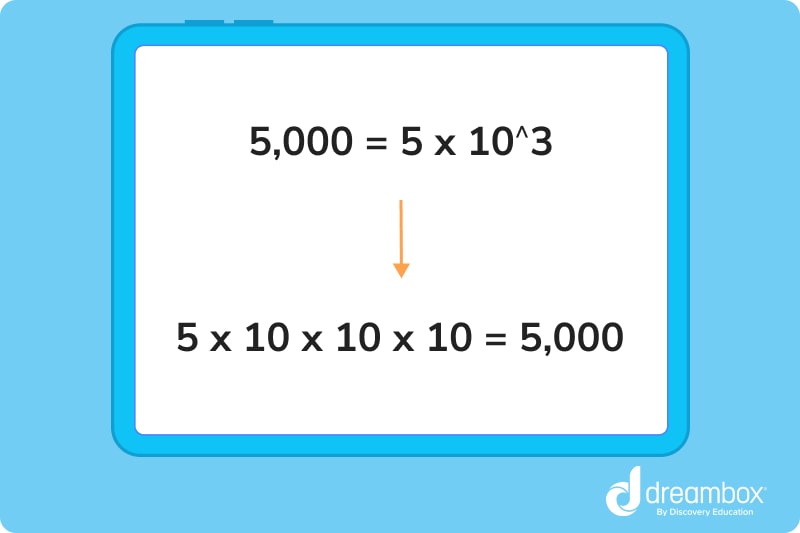
Advanced Topics in Standard Form
Now, let’s explore some advanced topics in standard form. Don’t worry if it seems a little challenging at first; understanding these concepts will help you as you progress in your mathematical journey.
Standard Form of Fractions
You can also use standard form with fractions. When dealing with fractions, we can write the numerator and denominator in standard form separately. Here is one example of standard format: the fraction 3/20 can be expressed as 3 x 10^0 / 2 x 10^1. When we simplify it, we get 1.5 x 10^-1. It’s like magic!
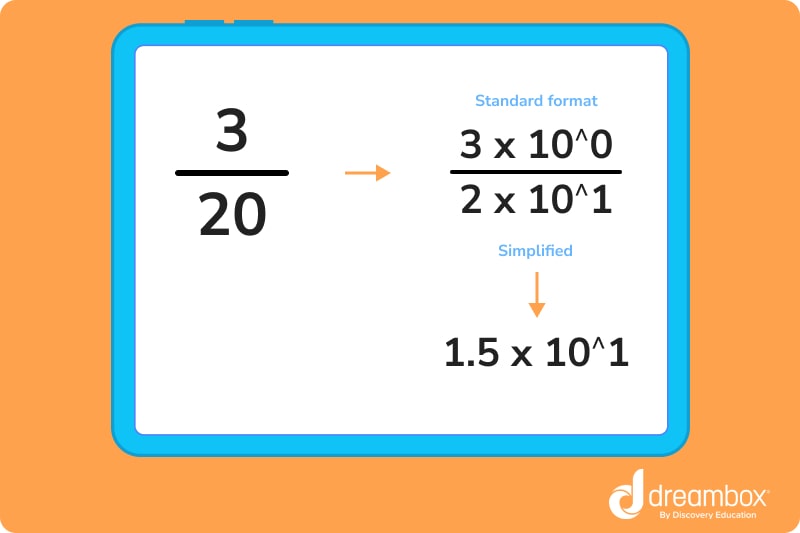
Table of contents
Get math help with DreamBox
Turn math into playtime with DreamBox Math
DREAMBOX MATH
Get started for FREE today!

Standard Form of Equations
Equations can also be written in standard form. Let’s start with linear equations. In standard form, a linear equation looks like this: Ax + By = C. The letters A, B, and C represent numbers we need to find. Quadratic equations also have a standard form, written as Ax^2 + Bx + C = 0.
Linear Equation Standard Form
The standard form is represented in linear equations as Ax + By = C, where A, B, and C are constants. This form clearly lets us see the coefficients (the numbers multiplying x and y). For example, the equation 2x + 3y = 7 is in standard form. Therefore, we can easily compare the coefficients by writing equations in this form and see how x and y are related.
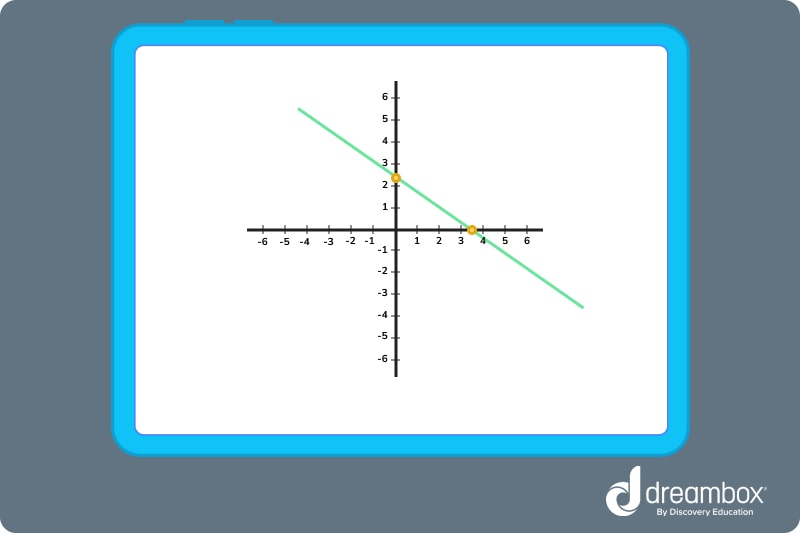
Quadratic Equation Standard Form
Quadratic equations also have a standard form, written as Ax^2 + Bx + C = 0. This form helps us identify the quadratic, linear, and constant coefficients. For instance, the equation x^2 – 5x + 6 = 0 is in standard form. By expressing quadratic equations this way, we can quickly recognize the coefficients and understand the behavior of the quadratic function.
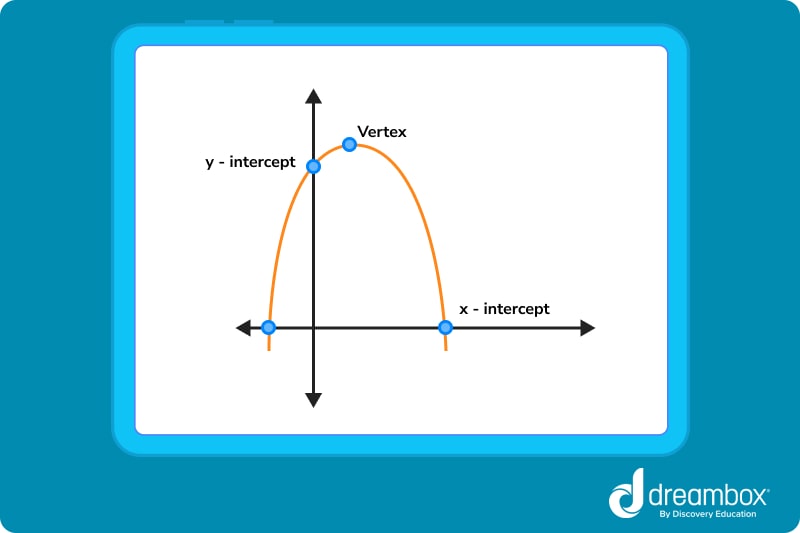
Standard Form of Polynomials
You can write polynomials with multiple terms in standard form too. We arrange the terms in descending order of their degree, which means the highest power comes first, followed by the others. For example, the polynomial 5x^2 – 2x^3 + 3x^4 – 7x + 1 can be written in standard form as 3x^4 – 2x^3 + 5x^2 – 7x + 1
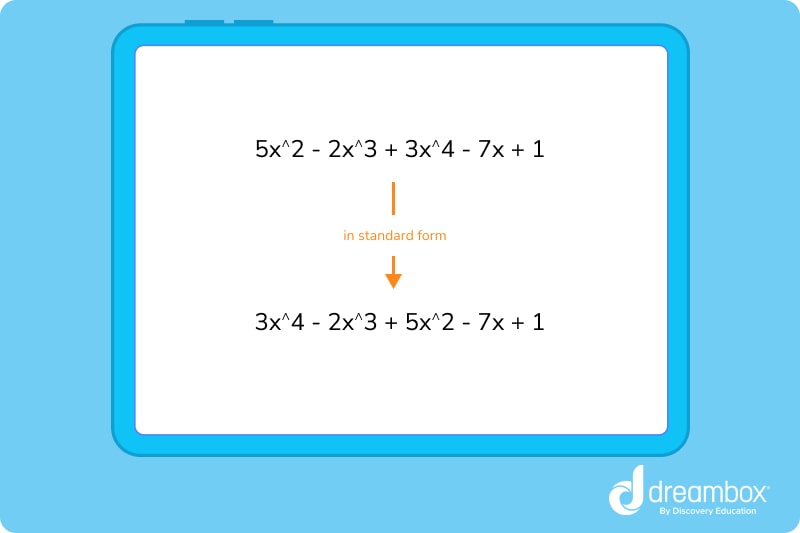

The math program that drives results
Get started today!
DreamBox adapts to your child’s level and learning needs, ensuring they are appropriately challenged and get confidence-building wins.
FAQs About Standard Form
Standard form in math refers to representing numbers or equations in a consistent format that includes a coefficient and a power of 10.
An example of standard form is 4.2 x 10^2, which represents the number 420.
Yes, standard form and scientific notation are the same concepts. Both involve writing numbers as a coefficient multiplied by a power of 10.
Take at home math practice to the next level
Empowering parents and educators to make math practice more impactful. Plus, your kids will love it.


